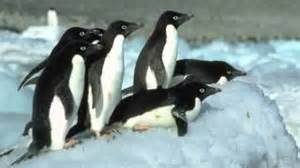A Monster Calls by Patrick Ness is a bittersweet teen fiction about a boy struggling to come to terms with his mother’s serious illness.
Synopsis:
Connor, a twelve-year-old-boy, is faced with unbelievable stress – a dying mother, a father who has split from the family, a recurrent nightmare, a domineering grandmother, and bullies at school. Then, a monster visits. But this monster, which Connor initially believes is just a dream, insists that Connor “called” him. Between dealing with the above problems, Connor must listen to the monster’s stories that urges him to confront his anger, confusion, and frustrations. And at the end of the monster’s three tales, Connor is forced to reciprocate by describing his nightmare – a story of truth, and the root of his depression and anxiety.
Pros:
- Connor is a believable, imperfect boy, who many readers will be able to identify with.
- This story deals effectively with a thought provoking and tough issue of a parent’s grave illness.
- All characters are well formed and sincere. The adults don’t have everything figured out, and they are portrayed as flawed humans dealing with a difficult situation as best they can. Even the bully has depth and isn’t your paper-thin rendition of a bad guy.
- The story is written in a compelling action-packed fashion, which encourages you to turn the pages.
- A Monster Calls can be enjoyed on many different levels. Younger kids can enjoy it on a fantasy level, and older teens can delve into the symbolism of the monster and the stories it tells. This is why I have classified it as both Young Adult and Middle Grade.
Cons:
- The story deals with a sensitive and heart-wrenching tragedy of losing a parent to illness. This could be very disturbing for kids, who are sensitive, or are dealing with the same issues.
- A bully receives what he deserves, which is satisfying, but not always realistic.
Impression:
When I picked up A Monster Calls to read, I was surprised to see it was coming out as a movie, with big names involved, like Liam Neeson and Sigourney Weaver. I quickly fell in love with the style and the content. I enjoy reading a book that has heavy symbolism and this didn’t disappoint. The story is based upon an idea of writer Siobhan Dowd, who has written four other amazing Young Adult novels. Tragically, this would have been her fifth, if she too hadn’t been taken too early by cancer. Patrick Ness, the author, has been passed the literary baton, and he ran with it, creating a powerful and provocative piece of work. In his words, he challenges other writers to “…go. Run with it. Make Trouble.”
Discussion Questions:
- What is Connor’s real nightmare and why is he so ashamed of it? Why does the monster force Connor to tell it?
- What lies do Connor and his mother tell each other during her illness? What lies do they tell themselves? Are they necessary? Why do those lies ultimately need to be replaced by the truth?
- Why does Connor allow himself to be bullied by his classmate Harry? What does Harry understand about Connor that no one else does?
- Connor O’Malley is often unsure about what separates the real from the imagined, and so is the reader. How does this book continually keep its readers off-balance? Why?









